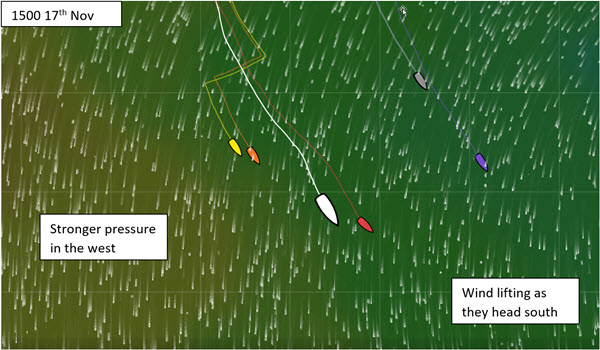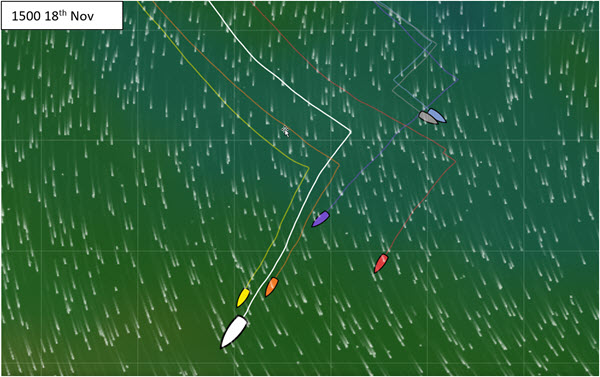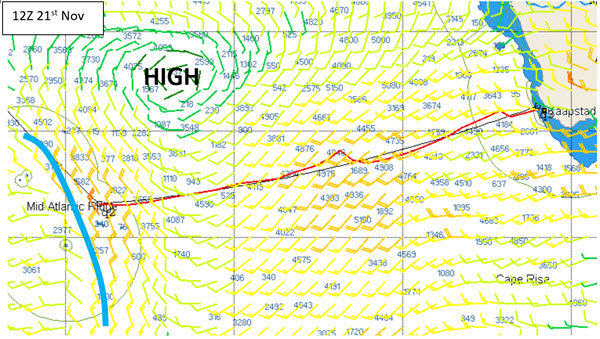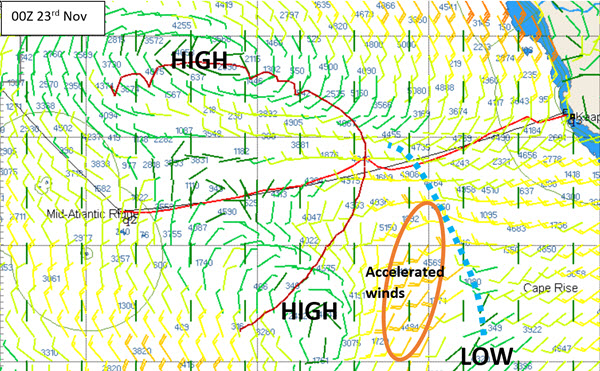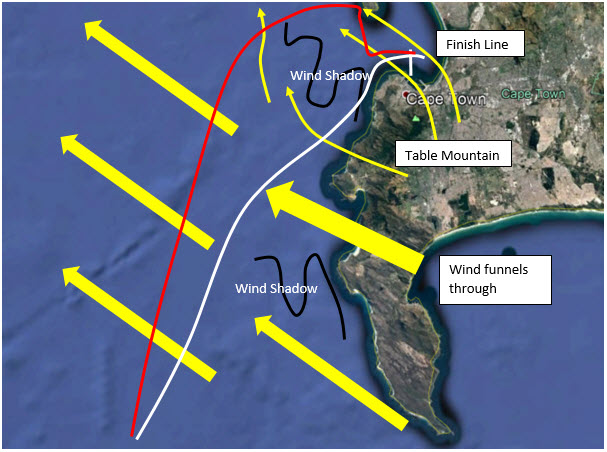Two weeks at sea and the teams are all heading ESE and charging towards Cape Town in the South Atlantic, rather than the Southern Ocean. Not wanting to rain on their parade but technically the Southern Ocean is taken as being south of 60S and encircling Antarctica; the boats are a long way off that, rolling along at 38 S, the northern hemisphere equivalent, give or take a bit, of where they started this leg in Lisbon. Albeit the weather conditions are very, very different.
We left the teams as they set up to cross the doldrums and begin the charge south to negotiate the St Helena High Pressure and we rejoin them as they charge towards the finish with Brunel coming out of stealth and plenty still to play. But games have already been played.
Doldrums: blink and you miss them.
The teams had an exceptionally quick crossing of the doldrums. As we discussed in the previous update they were all set up to cross around 27 W and the satellite imagery showed a relatively inactive zone. Yes, there were still clouds and stops and starts and challenging conditions, but no one got becalmed and they all rolled out 2 days later relatively speaking in the position they entered.
The fleet compressed a bit so the front four were all in eyeball contact, and Scallywag and Turn the Tide remained 50-60nm behind, with Turn the Tide in a strong easterly position. Turn the Tide used this position on their immediate rivals Scallywag and were able to go bows down first and turn that into some fast forward motion to get ahead of the them as they headed south.
Positioning for the St Helena High
The teams were then essentially in a drag race south, in their fastest mode to get around the St Helena high pressure. Initially, there appeared to be a subtle speed difference as Mapfre and Dongfeng edged out, also helped by getting into the stronger pressure first. Mapfre made the first subtle repositioning a couple days out of the doldrums, sailing a higher mode to position themselves further east on the fleet and in theory hold stronger breeze at the time, which was closely followed a day later by Akzonobel making an even more aggressive move east. However, onboard reports from this team admit that they had been struggling with speed and therefore chose to sail a higher, faster course and work on their speed. Or at least feel better about by going faster and look to cut the corner of the St Helena high.
The trouble with trying to cut the corner of the St Helena high is you can look like heroes for a day on the ranking and then the wind continues to lift and get lighter and you gybe and point at the stern of the boats to west and south.


